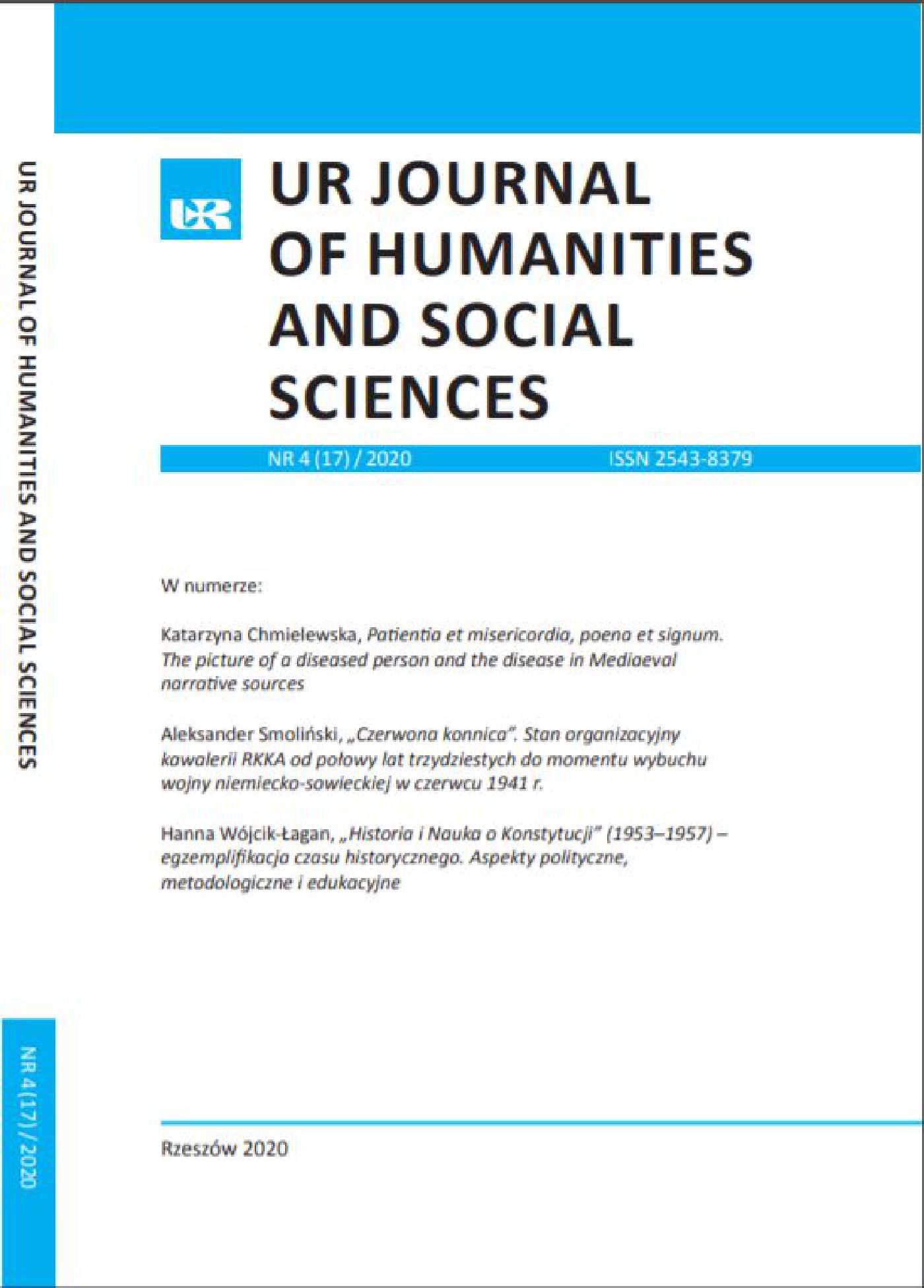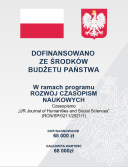Powstanie kawalerii SS Totenkopf i jej rola w niemieckiej polityce okupacyjnej na ziemiach polskich w latach 1939–1941
DOI:
https://doi.org/10.15584/johass.2020.4.5Słowa kluczowe:
1 Reiterstandarte SS Totenkopf Hermann Fegelein, Gustav Lombard, niemiecka okupacja, kawaleria, II wojna światowaAbstrakt
Tematem artykułu jest jeden z niemieckich pułków SS stacjonujących na terenie okupowanej Polski i jego rola w polityce okupacyjnej Niemiec. Choć dzieje formacji SS są bardzo dobrze znane zarówno w literaturze naukowej, jak i popula rnonaukowej, to wchodząca w jej skład kawaleria nie doczekała się dotychczas obszerniejszych opracowań. Temat wydaje się interesujący, ale nie został jeszcze omówiony w żadnej książce w języku polskim. Większość literatury odnoszącej się do tego zagadnienia została wydana w językach niemieckim oraz angielskim. Kawaleria SS Totenkopf działała przede wszystkim w Generalnym Gubernatorstwie i podlegała Wyższemu Dowództwu SS i Policji. Część jej szwadronów operowała także na terenach włączonych do Rzeszy, tj. Kraju Warty (Reichsgau Wartheland). Niniejszy artykuł podejmuje problematykę formowania się kawalerii SS Totenkopf i stopniowego włączania jej w brutalną politykę okupacyjną III Rzeszy na ziemiach polskich. W przypadku tej formacji mamy do czynienia z takimi zadani ami, jak zwalczanie pierwszych zalążków partyzantki, poszukiwanie broni, udział w tworzeniu gett czy też pomoc w eliminowaniu polskiej inteligencji. Na uwagę zasługuje również udział tej jednostki w kręceniu filmu propagandowego Kampfgeschwader Lützow, w którym przedstawiono polskich kawalerzystów atakujących szablami niemieckie czołgi. Ten fałszywy obraz powielany był po wojnie w niektórych filmach czy książkach i przyczynił się do wypaczonego przedstawienia polskich żołnierzy w walkach obronnych w 1939 r.Downloads
Download data is not yet available.
Pobrania
Opublikowane
2020-12-30
Jak cytować
Dybek, J. (2020). Powstanie kawalerii SS Totenkopf
i jej rola w niemieckiej polityce okupacyjnej
na ziemiach polskich w latach 1939–1941. UR Journal of Humanities and Social Sciences, 17(4), 72–88. https://doi.org/10.15584/johass.2020.4.5
Numer
Dział
Artykuły
Licencja
Prawa autorskie (c) 2020 Wydawnictwo Uniwersytetu Rzeszowskiego

Utwór dostępny jest na licencji Creative Commons Uznanie autorstwa – Użycie niekomercyjne 4.0 Międzynarodowe.



